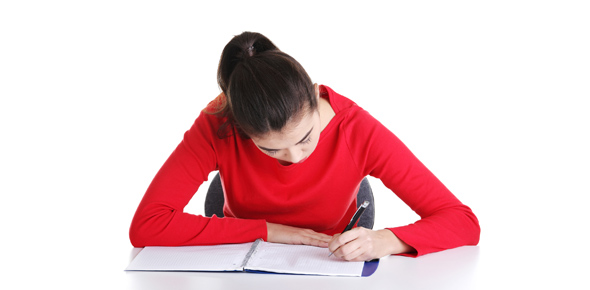Related Flashcards
Related Topics
Cards In This Set
| Front | Back |
.jpg) A |
Giotto, Madonna Enthroned, c. 1310, tempera and gold leaf on wood-Madonna is depicted as strong and unshakeable compared to Cimabue's enthroned Madonna. She is shown as weighted and queenly in this painting, marked the end of medieval painting and beginning of a naturalistic approach.
|
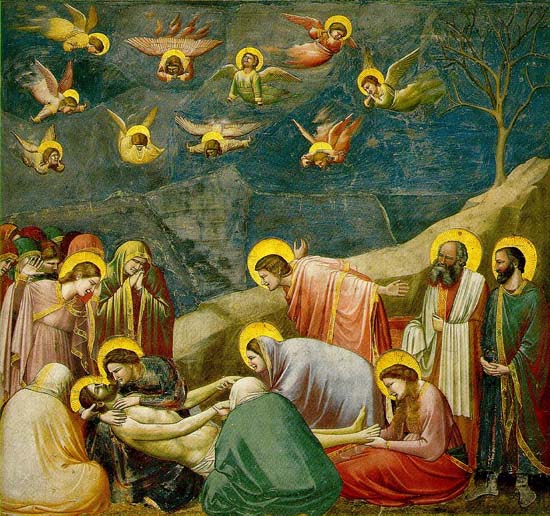 B |
Giotto, Lamentation, c. 1305, fresco, Arena Chapel, northern Italy
|
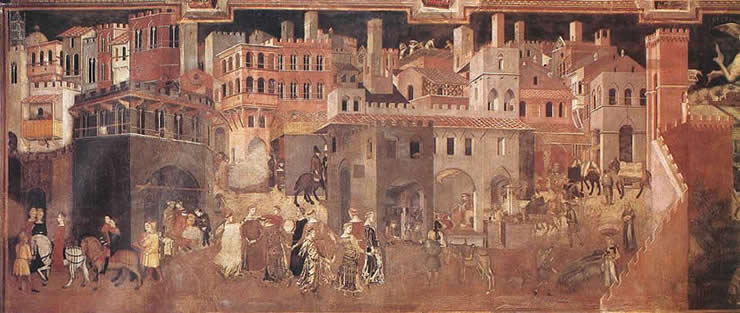 C |
Ambrogio Lorenzetti, Effects of Good Government in the City and County, 1339, fresco, city hall of Siena, Italy-Painting is a panoramic view of the city of Siena, and the effects good government can have. A bustling city and a secure country side is for those who operate under the law.
|
 D |
Jan Van Eyck, Arnolfini and Bride, 1434, oil on wood-Depicted Arnolfini, a financier, and his betrothed, taking marriage vows, with almost all objects in the bedroom conveying the sanctity of the event. The clogs show that it is taking place on holy ground, the dog symbolizes fidelity, the curtains of the marriage bed are open, a statue of the saint of childbirth is over the bed, a whisk broom symbolizes domestic care, oranges = fertility, candle and mirror=all seeing eyes of God, each object is exquisitely painted, and in the mirror the artist and another figure is seen.
|
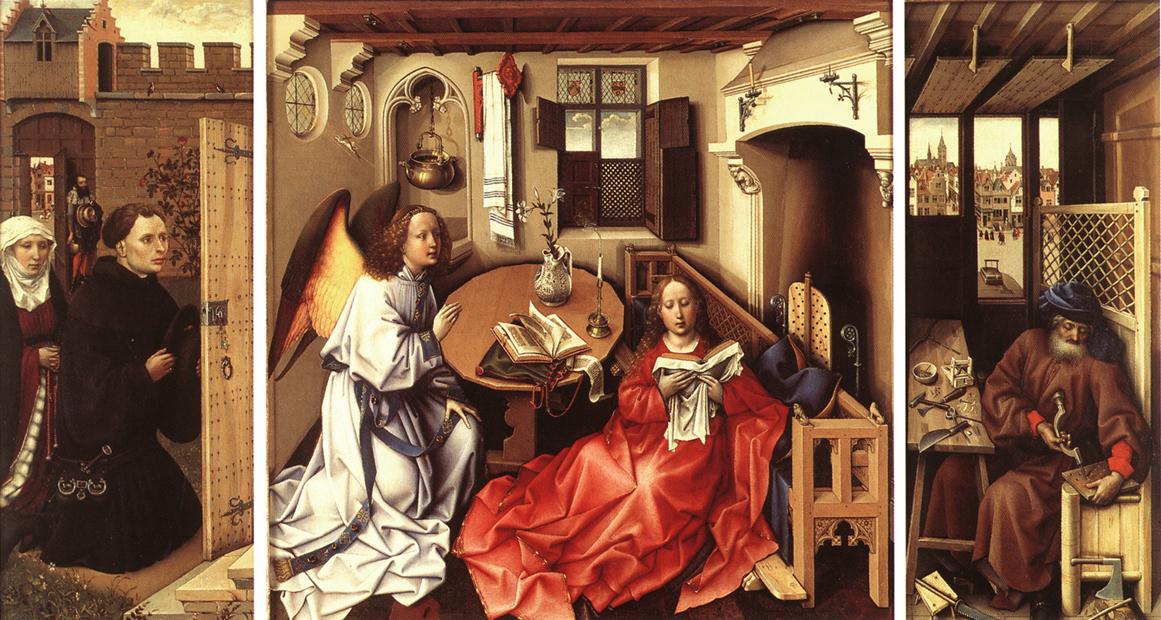 E |
Robert Campin, Merode altarpiece, c. 1425, oil on wood-Annunciation theme is the central panel, Gabriel approaches Mary, The objects in the room represent the the Virgin's purity, the right panel shows Joseph making a mousetrap, symbolizing Christ is bait to trap the Devil, the left side closed garden depicts Mary's purity, and the flowers relate to her purity.
|
 F |
Rogier Van Der Weyden, Deposition, ca. 1435. Oil on wood-The shallow depth of the painting imitates the shallow shrines popular in the 15th century, the painting has a strong emotional impact. It resembles a relief carving
|
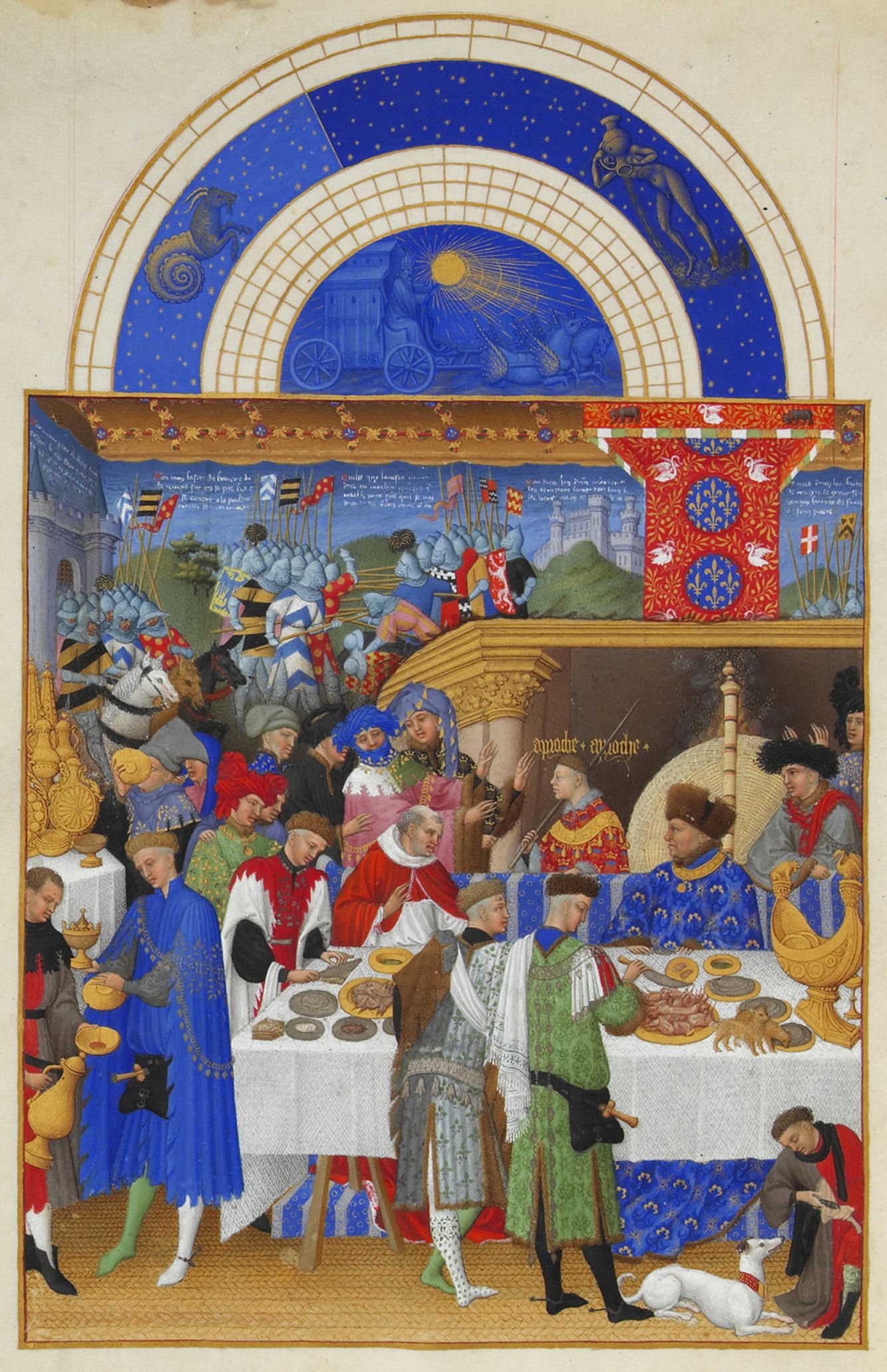 G |
Limbourg brothers, The Very sumptuous Hours of the Duke of Berry, 1413-16, ink on vellum-A calendar representing 12 months of associated seasonal tasks, alternating between nobility and peasantry, January's depicts a New Year's celebration, while October's focuses on peasantry, shows a sower and harrower in front of the Louvre.
|
 H |
Donatello, David, c. 1450, bronze-Part of the Renaissance revival of classic principles, nude sculptures, the clergy didn't accept nudity in art and only rarely appeared. Reflected the sculptural styles similar to how Gods were depicted.
|
 I |
Masaccio, Tirbute Money, c. 1425, fresco, Florence, Italy-Source of light comes from outside the picture, the placement of the figures is unique, in a large landscape, with everyone in a circle around Christ.
|
 J |
Masaccio, Holy Trinity, c. 1425, fresco, Florence, Italy-Shows the application of mathematics to the perception of space, demonstrated new space and perspective principles.
|
 K |
Sandro Botticelli, Primavera, c. 1482, tempra on wood-Celebrates love in the spring, Venus and Cupid at the center of the composition, probably commissioned to commemorate the wedding of Lorenzo
|
 L |
Michelangelo, Sistine Chapel frescoes, 1508-12, Vatican
|
 M |
Leonardo, Madonna on the Rocks, c. 1485, oil on wood-Used understandings of painting light and dark to express emotion. Used gestures and a pyramidal composition to unite the Virgin, John the Baptist, and Christ
|
 N |
Leonardo, Last Supper, c. 1495, fresco and oil on tempra on plaster, Milan, Italy-Christ, being the focal point of the painting, announces that one of his disciples will betray him and they react.
|
 O |
Raphael, School of Athens, 1509-11, fresco, Stanza della Segnatura, Vatican Palace-A gathering of the great philosophers and scientists, each with an expression reflecting their views on the world. Great achievement in perspective for this painting.
|



